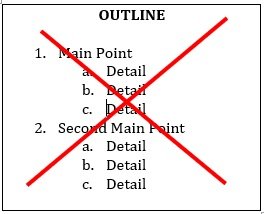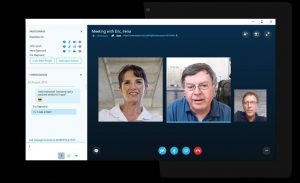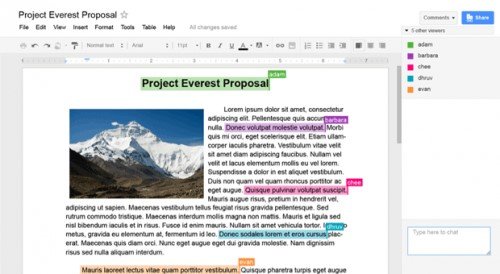Auditory, Visual or Kinesthetic? Why You Should Tell Your Writer Your Learning Style
May 1, 2018
When starting a project with a writer – be it a book brochure, website or whitepaper – it’s common to focus on the end goal. How will it read when it’s done?
Less focused on, but equally important, are the mechanics of creating the document.
That is, a smooth journey from blank page to finished manuscript, can not only directly impact the quality of the final product, it can mean the difference between a fun and positive experience and a tortuous and inefficient disaster.
So how does one ensure this smooth journey?
Turns out, when working with a writer, there is no “one size fits all”.
Some writing teams use outlines and project management systems. Others rely on meetings, or texts, or campaign briefs, or process maps.
But do these tools work for you?
It’s not unreasonable to ask your writer or writing team to adjust their process to fit your style of working.
But before you start giving them pointers on their writing process, you may want to walk through this quick exercise to determine…
What type of learner are you?
Turns out, understanding your individual learning style can go a long way towards picking the right tools for getting your writing job successfully to the finish line.
Mariaemma Willis is an expert on learning styles. Based in California at Reflective Educational Perspectives, Mariaemma is often called upon to help companies, students, and juries learn how to exchange information.
Mariemma advises, “Each person will bring their own style of writing and writing management to a project – but using your learning style to set expectations as the project manager – you can set best practices that work specifically for you. Use those traits to find the best way to communicate what you need to have a successful end product.”
Preparing the team
Besides the obvious (disseminating relative project information), take the time to discuss process during your initial kick-off meeting.
Mariaemma suggests reviewing past projects for guidance. Ask the contract team for similar project briefs, examples of prior work, and outlines/roadmaps. Asking for this information will help shed light on the way projects were executed in the past.
Take this as an opportunity to set YOUR expectations and tweak the process to fit your communication style.
Be proactive about telling your writers how you work best:
- How much time do you have to allocate to communicating about the project?
- Will you be available on a weekly basis?
- What means of communication do you prefer? Written or verbal?
- If you like written communication, do you want longer emails with tons of detail or shorter more concise updates?
- If you prefer verbal, do you like to talk organically about goals? Or, do you have a short, concise list to guide you?
- When providing feedback on the project, how do you want to communicate draft changes and comments? Email? Phone?

You may also want to mention specific communication tools that work well for you.
Not sure what to suggest? Knowing if you are an auditory, visual or kinesthetic learner can give you a clue.
Three Types of Learners
Auditory
Let’s start with Auditory.
Auditory Learners have a preference for transferring information via listening. Either to the spoken word itself, conversations, sound or noises.
An Auditory Learner uses phrases such as “tell me” and “let’s talk it over.”
These are people who can remember all the words to songs that they hear. They’ll also be able to perform a task after listening to an expert.
This group pays attention to detail and likes to be in the thick of things.
If you’re reading this and thinking this sounds familiar, then the following information might help.
- Encourage lots of verbal Q&A. You learn best by talking things out. Rather than asking questions in an email or providing feedback on a Word document, get on the phone with your writing team and talk through any questions, concerns, or corrections you’d like to make to your draft.
- Talk through project scope and timeline. Detailed project calendars, timelines, and flowcharts can seem overwhelming if you’re more of a “let’s talk” type. Make sure that you discuss all of the goals, objectives, and steps of the project with your writing team. You learn by hearing and speaking, so all of those dates and deadlines will seem more “real” once you’ve talked them over.
- Steer clear of outlines for written content. If you’re like most auditory learners, you’d rather run a mile through Death Valley than sit down and read a bullet-pointed outline of your next whitepaper, web page, or annual report. To you, planning and organizing happens best during a face-to-face meeting, phone call, or Skype session. Set up calls with your writing team. Verbally confirm that you’re on the same page, about what you’ve seen so far, and give them the green light to start writing a draft.

- Set up a standing weekly call. Regular communication is a must for any large project — but you have zero interest in wading through “update” emails from your writing team. Here’s an auditory-learner alternative: Pick a time that works for everyone and schedule a 30-minute standing weekly “check-in” call. This is a win-win for everyone: You don’t have to sift through a massive amount of emails, your team has a guaranteed time to ask questions, keep you updated, and bring up potential roadblocks. Everyone will hear the information and stay on the same page.
Visual Learners
Visual Learners tend to be the opposite of Auditory.
Visual Learners have a preference for seen or observed things, including pictures, diagrams, demonstrations, displays, handouts, films, flip-chart, etc.
They use phrases such as “show me,” and “let’s have a look at that.”
These are people who will work well with either reading instructions or watching someone else perform the exercise first.
At the same time, Visual Learners don’t want to be bogged down with lengthy wordy emails where the main point is hard to decipher.
They’re also not fans of long meetings where the goal or point is lost.
If this resonates with you, then you might find these tips helpful.
- Ask for examples. Visual Learners as stated like to be “shown” ideas. Ask your writer for an example of previous written pieces to use as a catalyst for conversation. Take a look at the way the draft was written. If you see something that doesn’t work or might be a method that you don’t like – point it out on the initial calls.
- Carve out time for a longer kick-off meeting. When you have your kick-off meeting with the contract team, carve out a minimum of an hour or more for an initial in-depth discussion. The preference would be a face-to-face meeting in this category, but when this is not possible, an extended phone meeting might do the trick. If the phone doesn’t work for you, and you need to have a more visual experience, try Skype or an online meeting site (think GoToMeeting) to make up for the lack of a visual connection.

- Use call agendas. Talk with your colleagues and put together a list of questions you’d like to have answered by the contract team when going into the kickoff meeting. You have certain things you’d like accomplished during the meeting and would prefer to keep it high-level. The drafted questions will serve as a guide, and be a visual cue to what needs to be accomplished with the scheduled time.
- Ask for process maps and at-a-glance schedules. During the meeting, ask for a roadmap or a chart of the project plan. Take into consideration the way you review written information, and create a timeline that includes highlighted keywords or color-coded cues for essential items.
- Pick the progress report that works best for you. Progress reports on a weekly basis work better for you when they are typed out. Seeing is believing, and processing information in this manner allows you to take in what’s said. Also, don’t hesitate to ask for these notes to be to the point and short. An example would be asking for a report that highlights three items for the week – and have the contractor recap any of the three accomplishments, roadblocks, or action items that are the most important to the project. A short, brief, note will provide a quicker review and revision cycle with your contract team.
- Suppress the urge to write commentary. Do you feel like your writer missed the mark? It’s ok to write up your comments, but keep in mind that you’re prone not to provide a lot of detail in written feedback. This can be confusing to your writer if you are trying to convey a lot of complicated concepts at once. Pick up the phone and give your writer a call. It’s not your preference to chat for long stints of time. But, carve out 15 minutes to go over initial drafts and give feedback. The chat will prove valuable to your writer, and get them back on the right track.
Tactile/Kinesthetic
And finally, there is the Tactile/Kinesthetic Learner.
Tactile/Kinesthetic Learners are DOERS, and have been known to have a lot of energy.
Hands on experience and real-life activities help these learners remember.
A Kinesthetic Learner will use phrases like, “let me try” or “how do you feel?” and will be able to perform a task by just trying it out.
Think about someone who likes to experiment with a recipe before reading the book. No measurements or suggestions for them. They love for learning to be as experiential as possible.
Is this you? Here’s some tips that might help:
- Pick the best project management tool. The Kinesthetic/Tactile group is another group where an in-person meeting would probably be preferred, but when meeting in-person, you might lose interest. You prefer to see what you’re doing and jump in to correct things. Try Google Docs to connect if possible, and to manage the project. Google Docs is a living, breathing, version of the document and will allow you to make edits real time. You’ll be able to be apart of the process and as hands-on as needed.

- Express your vision. Visualization is another strong asset for Kinesthetic/Tactile Learners. Though visualization is normally an internal exercise for you as a person, you can share your vision by drafting a list of what you’d like to see in the document or what you hope to accomplish. Share this with your team, and explain the thought process behind it.
- Come with examples. Another exercise to “visualize” the project is to show examples or writing samples of projects you like. Don’t just rely on your writer for examples: come armed with your own. You’ve got ideas about what you’d like to see written, and without psychic abilities, your team won’t be sure how to retrieve them. So show examples of what you’d like to see, explain the steps involved, and why it worked for you in the past.
- Take action, and keep up with progress. Recaps or progress reports for the Kinesthetic/Tactile learner work best when you can take action. Think physically acting things out. You might prefer setting a 15-minute time each week to go down the list with the group, and physically cross items off. Or, you can combine an activity with your review and recap sessions of written pieces. Kinesthetic learners like being physical – studies have shown that combining a physical activity such as jogging on a treadmill or jumping on the elliptical fulfill the need to act out while reviewing. It might help you dig deeper and concentrate to really focus on what’s been accomplished and what still needs to be done.
Not everyone will fit into a neat category when it comes to using your learning style.
And, there is no simple answer on how best to tackle a writing project.
Your own personality traits will also play into a learning style and can impact your interaction with your writing team. But, using how you learn and work as a guide to communicating the vision for your project is a significant initial step in the right direction.
No one knows YOU, better than YOU.































